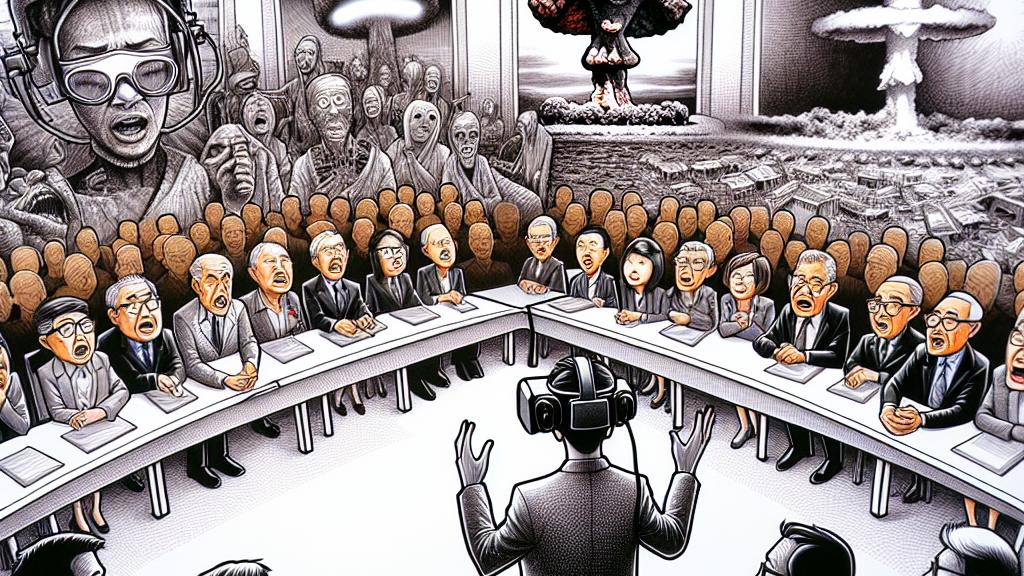How to Teach the Horrors of Nuclear Bombing Using VR Technology
Overview
- Virtual reality (VR) can provide an immersive glimpse into the terrifying experiences of atomic bomb survivors.
- The ethical implications of using VR to depict sensitive historical events are deeply rooted in cultural respect.
- By engaging with these immersive experiences, we can cultivate a profound understanding of the trauma caused by nuclear warfare.

Introduction to the Debate
In Japan, an intense and thought-provoking debate is unfolding about the most effective ways to communicate the devastating impacts of the atomic bombings during World War II. Imagine being in a room filled with passionate educators and historians discussing the merits of various educational methods. Recently, during one of these enlightening discussions, an audacious idea emerged: should we use virtual reality (VR) technology to immerse students in the horrifying experiences faced by survivors in Hiroshima and Nagasaki? Proponents of this innovative approach argue that immersive experiences could foster profound empathy, while critics warn that it may be considered 'inhumane'—raising critical questions about the respect owed to the memories of those who suffered.
Understanding VR's Potential
Now, envision this scenario: you don a VR headset and almost immediately find yourself transported into the chaos following an atomic explosion. The blinding light, the searing heat, and the cacophony of shrieks fill your senses, creating an experience that sticks with you long after you remove the headset. Such powerful simulations have the potential to convey the raw devastation of nuclear warfare in a way that textbooks, however detailed, simply cannot match. Advocates believe that while the experience is undoubtedly intense and may be distressing, it can also cultivate a visceral understanding that sparks empathy—a personal connection to historical events that fosters compassion and awareness.
The Ethical Dilemma
Yet the implications of using such technology are fraught with ethical dilemmas. Opponents of the idea argue that immersing people in traumatic simulations might lead to desensitization rather than understanding. This raises an important question: where is the line between education and exploitation? Consider, for example, the memories of those who endured the horrors of the bombings—should their suffering be reduced to a mere virtual experience? Critics contend that capturing such intense suffering for educational purposes could channel attention away from the respect owed to the victims' narratives and towards sensationalism. Balancing the use of VR with a commitment to honoring history is absolutely essential.
Supporting Examples from History
Interestingly, there are successful cases that illuminate the potential of VR in education about historical atrocities. Take the Auschwitz VR experience, for example. Participants are able to virtually explore the harrowing surroundings of Holocaust memorials while absorbing the historical narrative. If designed thoughtfully and sensitively, a VR experience centered around Hiroshima and Nagasaki could similarly foster empathy and a deeper understanding of the catastrophic repercussions of nuclear warfare. The critical objective is to avoid sensationalism and instead focus on honoring the lives and stories of those impacted, thus ensuring that their legacies endure.
Looking Toward the Future
So, what does the future hold as we embrace these new educational technologies? With the rapid advancements in technology, incorporating VR into our teaching methodologies could fundamentally change how we approach and confront the complexities of our history. Rather than shying away from difficult topics, we must embrace innovative practices that invite engagement with the past. However, this must be done with care. Creating enlightening and evocative experiences that provoke reflection while preserving the voices of those who bravely endured these horrors is crucial. With this approach, VR can serve not only as a dynamic educational tool but also as a heartfelt tribute—reconnecting future generations to the critical lessons surrounding the impacts of nuclear warfare.

Loading...